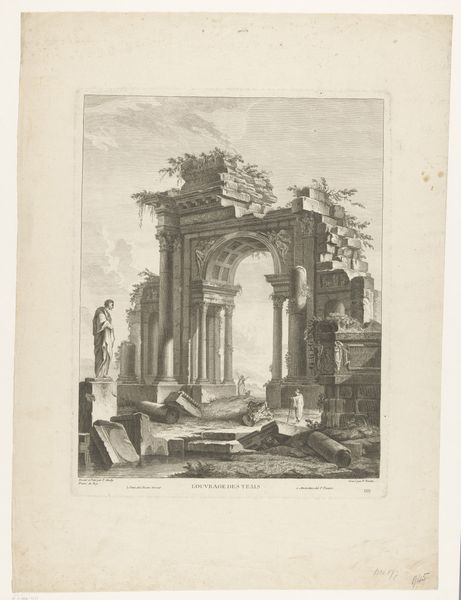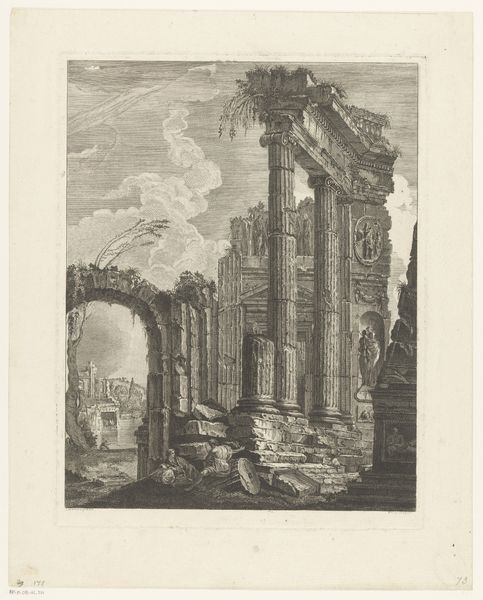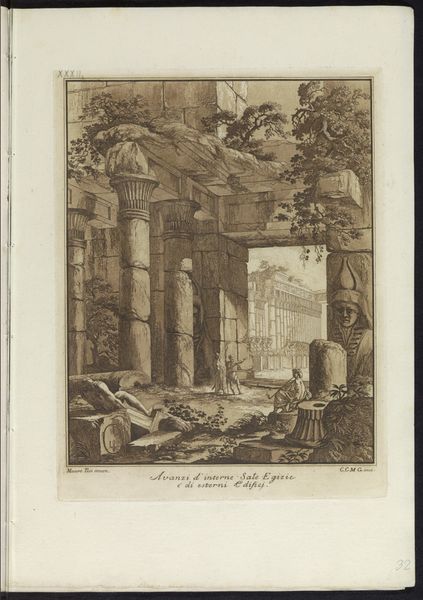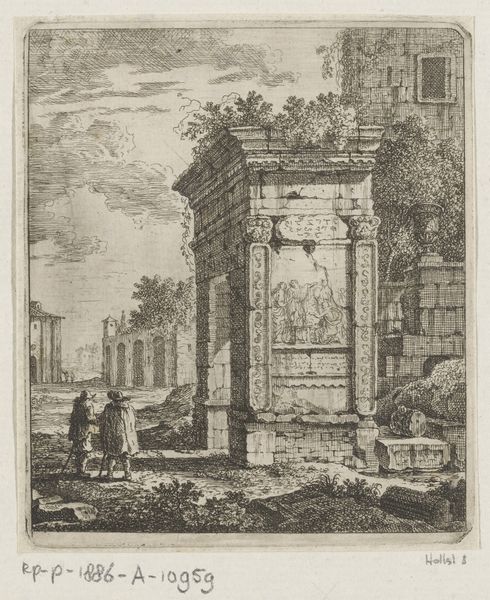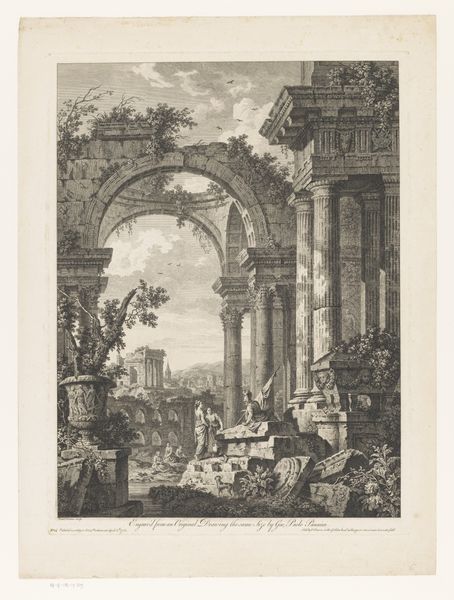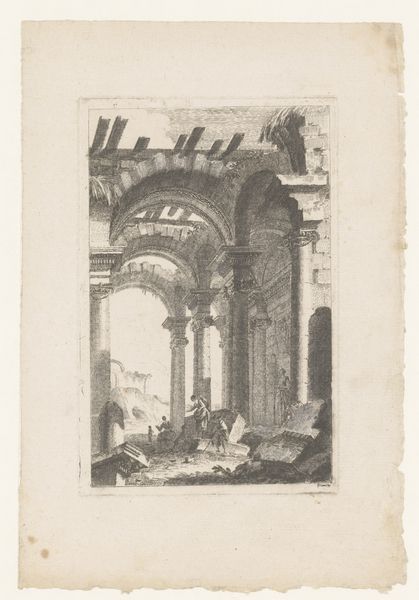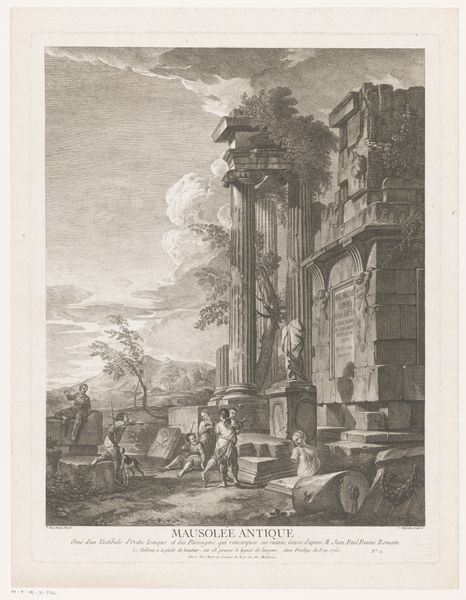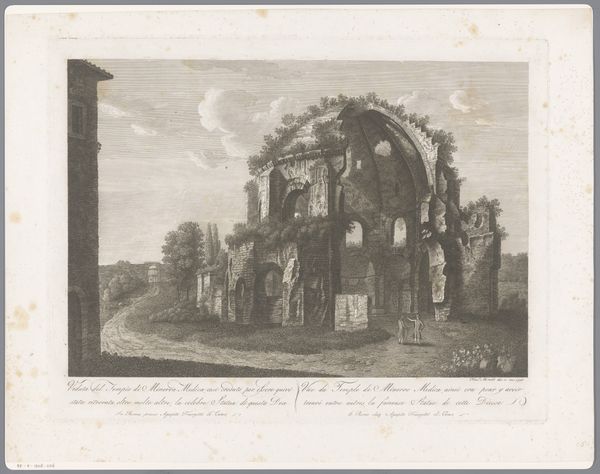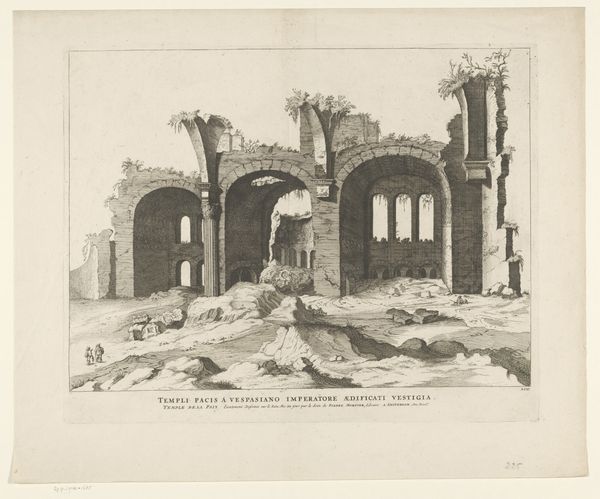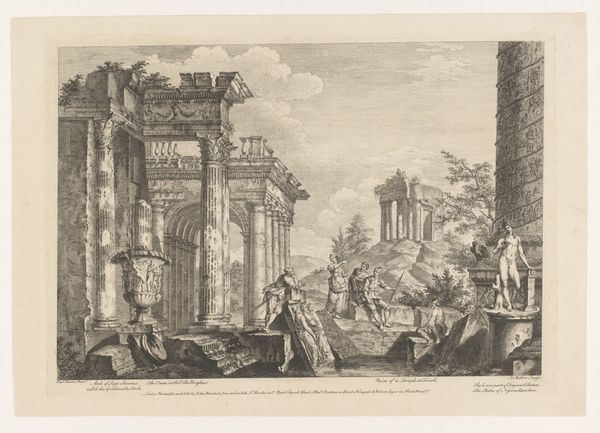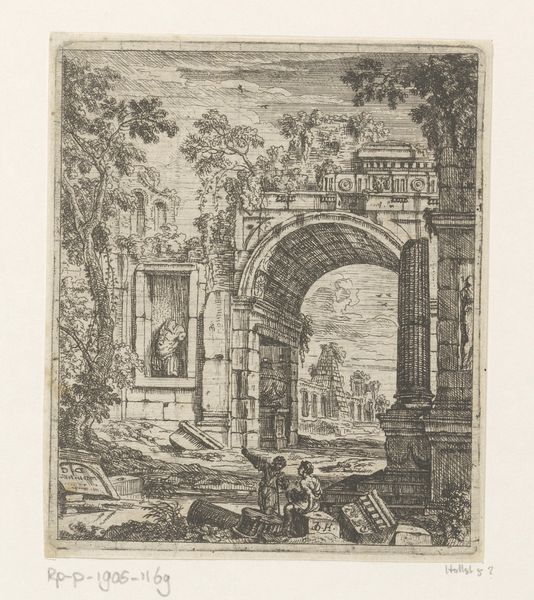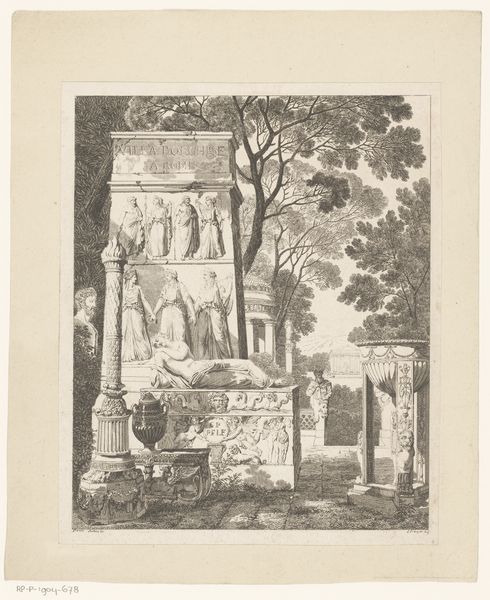
print, etching, engraving
# print
#
etching
#
landscape
#
classicism
#
history-painting
#
engraving
Dimensions: height 376 mm, width 294 mm
Copyright: Rijks Museum: Open Domain
Editor: So, here we have "Ruïne van een antiek monument," or "Ruin of an Ancient Monument," an etching and engraving by Pierre François Basan, sometime between 1739 and 1797. There’s such a melancholic feel to this decaying structure; it seems to whisper stories of a lost civilization. What symbols or narratives do you see embedded within this print? Curator: I am drawn to the pervasive use of ruins, an allegory for mortality and the transience of power. This echoes a very human obsession: remembering and preserving. Note the ruined archway mirrored by a still-standing, yet crumbling, temple-like structure. What do these contrasting images tell us about cultural memory and its selective preservation? Editor: That’s interesting. I hadn't considered that it might be speaking to selective preservation. Is there significance to the figures placed amidst the ruins? Curator: Absolutely. The small figures within the landscape are dwarfed by the monument, emphasizing the power of the past but also humanity's resilience, their continued presence. And the ruin itself…notice how it is a signifier of ‘classicism.’ In its time, this piece evokes both admiration for and anxiety about lost empires. What feelings does that duality conjure in you? Editor: It definitely makes me think about how future generations will perceive our own civilization’s ruins and the stories they will construct. Curator: Precisely. These images aren’t just aesthetic exercises; they're vessels carrying cultural memory and anxieties about the future. Basan’s etching encapsulates a timeless dialogue between past, present, and future, rendered through the potent symbolism of ruins. Editor: It's amazing how much history and symbolism can be packed into a single image. I'll never look at a "ruin" the same way again!
Comments
No comments
Be the first to comment and join the conversation on the ultimate creative platform.
